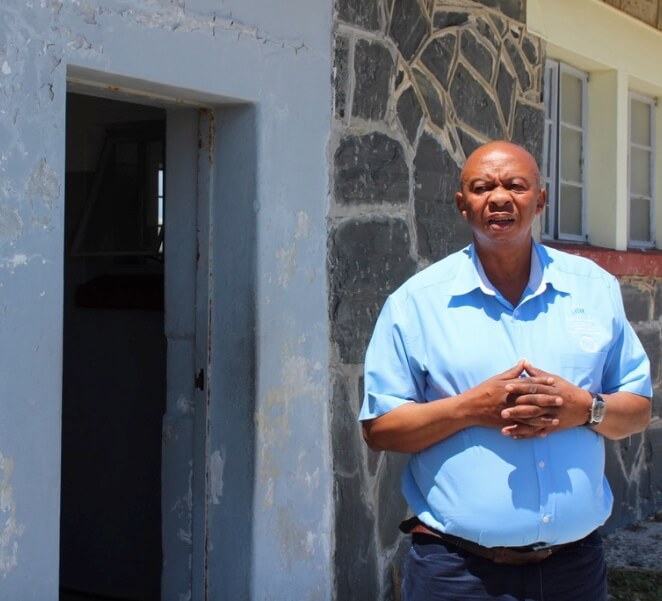Every day for 30 days we will be featuring a museum object that has inspired or intrigued us, in the hope that “an object a day keeps the doctor away.” We love creating exciting, meaningful storytelling through engaging experiences, but still firmly believe that it is hard to beat the thrill of being in the presence of authentic artefacts. Today is: the Robben Island guides.

Nothing resonates like hearing a story from someone who has lived it. Over and over again I hear the impact that the guides of Robben Island have on visitors; men who have suffered in that very place and choose the hope represented by telling their stories.
A UNESCO World Heritage Site, Robben Island is located in Table Bay in South Africa and has been used as some form of prison for nearly 400 years. From the early 1960s, it came to the world’s attention as a place used by the Apartheid Regime where many black political prisoners were kept there in harsh conditions, most notably future President Nelson Mandela. Since 1997, it has been a museum acting as a focal point of South African national heritage.
Nelson Mandela arrived on June 13 1964 at the age of 46 as the 466th prisoner. He was housed in Block C in a single cell reserved for the anti-apartheid leaders. He spent 18 years of the 27 he ultimately served living in a cold, damp cell with no furniture, no hot water and no toilet. Mandela was eventually released from Victor Verster Prison on 11th February 1990.
Oliver Tambo, leader of the ANC, once said: “The tragedy of Africa, in racial and political terms [has been] concentrated in the southern tip of the continent – in South Africa, Namibia, and, in a special sense, Robben Island.”
Robben Island is currently closed but you can hear some of the prisoners’ stories online.
